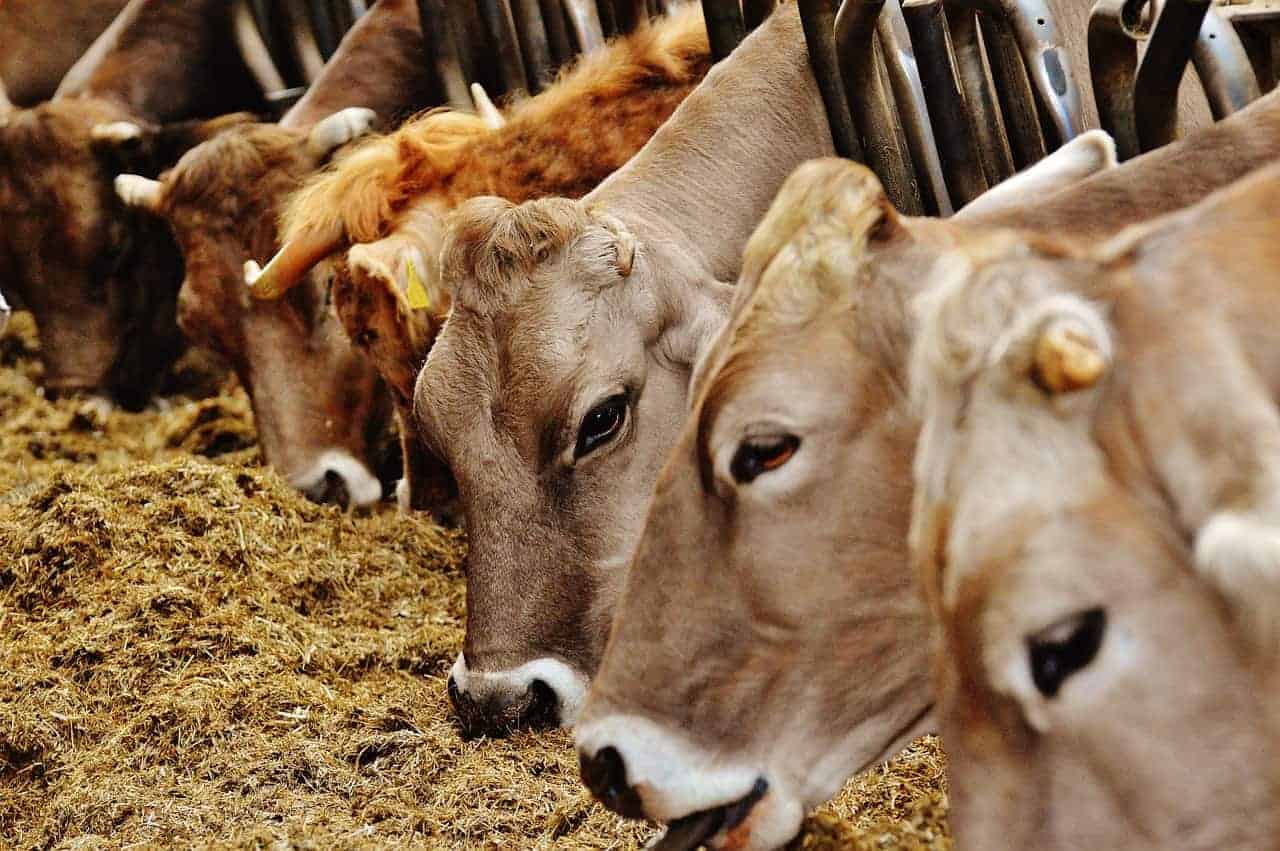This month’s newsletter was curated and edited by: Dr. J.W. Holloway and his Team
Chalk it up to basic biology. All red meats come from ruminant animals (cattle, sheep, camels, etc.) that are able to use high fiber feeds because they ferment the feed before they digest it. All other mammals digest their feed first and then ferment it. These ruminant animals did not evolve to produce tender meat. It’s no wonder, the goal of evolution is increased fitness of the one evolving with a certain level of disdain as to provision of a quality eating experience for some predator. After all, why would the one to be eaten want to please the one doing the eating? However, today, tender meat is in high demand by chefs and consumers alike.
What’s a grower to do?
A primary asset these animal populations have in this evolutionary process is genetic variation. If a population has no genetic variation, there can be no natural selection of the fittest. In this case, all animals are at the same level of fitness. Therefore, genetic variation in a population is a desirable attribute to provide resiliency and continuance in a dynamic environment. However, a quality eating experience every time is demanded by today’s consumers. The challenge is to create a consistent eating experience from an animal population that has prided itself on genetic variation.
What’s a grower to do?
EnhancedExchange researchers have discovered how the biological mechanisms underlying tender red meat can be formulated into natural technologies in ways that benefit ruminant animals in terms of their well-being as well as produce tender red meats. It is a happy biological condition that, at least some processes causing contented animals, also produces tender meats. These technologies can enhance the animals’ ability to handle stress, which can translate into tender red meat. Application of these technologies can also reduce the variation in red meat quality in the face of a variable animal population.
This happy condition (relationship of adaptation to stress and tender meat) is not true for all biological mechanisms for adaptation to stress. Some livestock, such as Zebu cattle, adapts to heat, but their biological method for adaptation contributes to tough meat. Other breeds that are not as well adapted to heat can struggle when a heat wave hits, especially in northern climates where a heat wave can occur suddenly not giving the animals opportunity to be conditioned to the shock.
The life-threatening danger to animals subjected to heat stress (or other stresses as well) is damage to the nervous system that can cause shock and death. This damage occurs because the complex proteins in the nervous system unfold and clump together creating holes leading to malfunctions. This phenomenon occurs in muscle tissue as well as in nervous tissue.
For Zebu cattle, when under heat stress, heat shock proteins are produced to protect the animals from these stresses by protecting complex proteins from being denatured. Because they act in this way, these heat shock proteins are called “chaperones”. Once these heat shock proteins are formed, they continue to protect the animal for life and beyond.
This protection of complex proteins by heat shock proteins also protects muscle structural proteins from being broken down in the postmortem ageing process of meat. Therefore, the mechanism that protects the live animal from stress while it is alive, ironically contributes to tough meat. The animal requires large, complex proteins in the muscle to give it structure and allow it to contract and expand on the performance of work. However, when a muscle becomes meat, these large proteins cause toughness. The purpose of postmortem aging is to break these proteins down. Heat shock proteins continue their protective ways postmortem, protecting these proteins, thereby interfering with the tenderization process.
All is not lost, though. Animals can be fed in a natural way that allows them protection from stress apart from the formation of heat shock proteins. Also, the effect of heat shock proteins can be circumvented by increasing the activity of the enzymes that break these structural proteins down during the postmortem aging process.
In order to accomplish this, it is necessary to first understand the science behind tender beef to determine the points the processes can be “perverted” to accomplish the endpoint of tender red meat. Unlike simple stomached animals (for example, chickens), when ruminants consume forage, digestion doesn’t convert the carbohydrates in the feed into sugars like glucose. Instead, the fermentation process in the vat we call a rumen produces fatty acids, including acetic, butyric and propionic acids.
Even though ruminants don’t absorb sugars from their digestive tracts, they need glucose for nervous and mammary function, as well as for the production of tender red meat. For the ruminant, propionic acid is a precursor of glucose. The ruminant animal can be fed probiotics allowing greater production of propionic acid in the rumen. Also, additives can be fed to increase the efficiency of conversion of propionic acid into glucose in the animal’s body.
Glucose has a dual role in producing tender red meat in that it is an obligate requirement for marbling and it is the precursor for the formation of glycogen, the only carbohydrate stored in the mammalian body. Adequate glycogen levels must be maintained to deliver the acid conditions in postmortem muscle required by the enzymes breaking down the complex structural proteins causing red meat toughness. After the animal is harvested, glycogen’s metabolic product in the postmortem muscle is lactic acid. This acid accumulates in the muscle in the absence of oxygen (the animal is no longer breathing). This, in turn, frees calcium, which enables a calcium dependent enzyme known as calpain to break down structural proteins. This tenderizes red meat during the postmortem aging process.
Conclusion
It’s exciting to know we can use natural methods to influence animals’ biological processes, aiding them to handle stress and concurrently produce the kind of meat we want.

